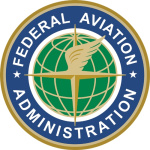- Industry: Government
- Number of terms: 35337
- Number of blossaries: 0
- Company Profile:
The distance required to accelerate to V1 with all engines at takeoff power, experience an engine failure at V1 and continue the takeoff on the remaining engine(s). The runway required includes the distance required to climb to 35 feet by which time V2 speed must be attained.
Industry:Aviation
The distance required to accelerate to V1 with all engines at takeoff power, experience an engine failure at V1, and abort the takeoff and bring the airplane to a stop using braking action only (use of thrust reversing is not considered).
Industry:Aviation
Force involved in overcoming inertia, and which may be defined as a change in velocity per unit of time.
Industry:Aviation
Components that are used with an engine, but are not a part of the engine itself. Units such as magnetos, carburetors, generators, and fuel pumps are commonly installed engine accessories.
Industry:Aviation
A stabilizer that can be adjusted in flight to trim the airplane, thereby allowing the airplane to fly hands-off at any given airspeed.
Industry:Aviation
A condition of flight in which the nose of an airplane tends to yaw toward the outside of the turn. This is caused by the higher induced drag on the outside wing, which is also producing more lift. Induced drag is a by-product of the lift associated with the outside wing.
Industry:Aviation
The point (altitude) at which, as the indicated airspeed decreases with altitude, it progressively merges with the low speed buffet boundary where prestall buffet occurs for the airplane at a load factor of 1.0 G.
Industry:Aviation
The science of the action of air on an object, and with the motion of air on other gases. Aerodynamics deals with the production of lift by the aircraft, the relative wind, and the atmosphere.
Industry:Aviation
Primary flight control surfaces mounted on the trailing edge of an airplane wing, near the tip. Ailerons control roll about the longitudinal axis.
Industry:Aviation
